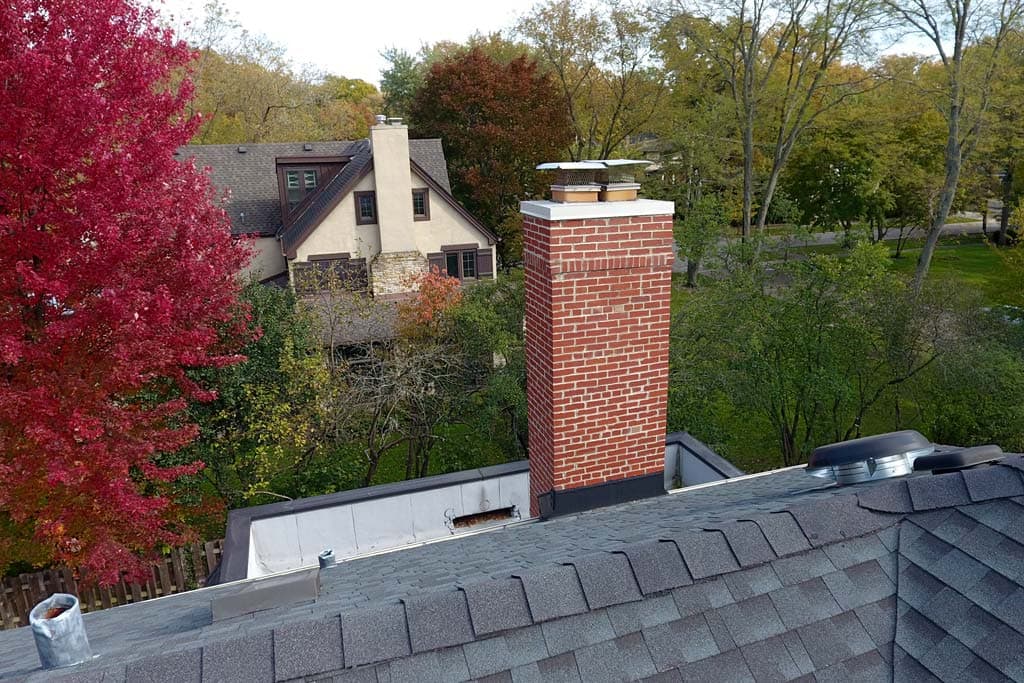
Chimneys, when well taken care of, are beautiful additions to any home. They add eye-catching appeal with their tall, brick structures - some adorned with unique chimney crowns and others spilling into elaborate fireplaces that tie a room together. But then there’s the dreaded staining on chimneys.

Staining can immensely detract from a chimney’s natural aesthetics. Ugly and unsightly, stains are a sign of deterioration, neglect, and weathering. Homeowners need to keep a sharp eye on their chimneys for stains because it’s the chimney’s way of showing that there’s a serious problem that should be addressed.
Homeowners should be vigilant in looking out for these four types of stain discolorations:
Black Stains
Black stains smattered across the exterior and interior of the chimney are one of the most common types of stains. Most black stains are reflective of soot buildup, which translates into a failure to regularly clean and maintain the chimney.
However, black stains can be indicative of something more serious when spotted on the exterior of the chimney. These black and deep brown stains are caused by excess creosote. Creosote, in turn, is caused by burning unseasoned wood, where fires smolder at low temperatures.
Creosote can also be caused by a flue that’s improperly sized for the firebox and by not having your chimney professionally swept when there’s an 1/8” of sooty buildup, as recommended by the Chimney Safety Institute of America (CSIA).
Here’s why you should be concerned about creosote buildup and black exterior and interior stains: chimney fires. Chimney fires sprout quickly and suddenly, engulfing your home in matter of minutes. For gas-burning fireplaces, exterior soot stains shouldn’t occur, but if they do, it could mean a deadly carbon monoxide leak.
Dark Green Stains
Dark green discoloration is commonly found on the outside of the chimney. You might also spot these dark green stains on your roof. They form in streak-like patterns and are often confused as deterioration, but these stains are caused by algae growth.
The deep hue of this stain can make it difficult to differentiate between soot markings and algae growth, so to truly tell the difference, a professional inspection should be conducted.
The algae grow when there’s a consistent flow of water present for it to feed off of. This can happen when the chimney crown lacks an overhang, water has found an area to pool and collect, or there’s an area on the chimney prone to water run-off.
The algae growth isn’t detrimental to the workings of your chimney, but if you allow it to linger, it can be harmful to the brick and mortar of its structure.
Red Stains
Red-hued stains appear on the exterior sides of chimneys that are prefabricated or made of metal. The red staining is the rusting of the metal of the chimney chase cover. Rust occurs and the red stains begin to form when the metal is exposed to water.
If you see red staining on your chimney’s exterior, there is likely a leak in the chase cover and water is getting into the chimney and fireplace. You’ll need to replace your rusted chimney chase cover immediately—water damage is serious, not just on chimneys, but for any structure.
White Stains
Finally, there are the white stains. This powdery discoloration is known as efflorescence, a white mineral salt that’s left behind when water evaporates. Efflorescence can remain from all different types of water sources—rain, ground water, sprinklers, and run-off. It’s common to spot efflorescence on the exterior of your chimney; after all it’s constantly being exposed to water and the outer elements.
Interior efflorescence; however, isn't a good sign. If you’re seeing white stains on the inside of your chimney, that means that water is finding a way inside, where it certainly shouldn’t be. There’s a leak somewhere on the inside of your chimney, and you must stop it before serious water damage occurs.
Preventing Stains

The sure-fire way to protect your chimney is simple: have an annual inspection. Homeowners with chimneys are responsible for maintaining them. Failure to responsibly upkeep a chimney can result in structural damage, chimney fires, carbon monoxide poisoning, and other concerns that can cause damages or even result in deadly consequences for those living in the house. The importance of a chimney inspection cannot be emphasized enough.
Chimney staining is an eyesore, but what’s more upsetting is that they’re indications of another problem, that's not as noticeable. Having a professional inspection for your chimney each year will give you the reasons why these various discolorations are appearing.
A professional sweep will be able to instruct you on your next steps to resolve these underlying issues before they become problematic. Tackling chimney stains now before they get out of hand will save you money on expensive repairs down the road.
Chimney Inspection and Cleaning
Before you start your chimney, you'll want to get it inspected. Your chimney should go though proper inspection to ensure that it's safe to use. From evaluating chimney flue liners to inspecting hidden areas, your chimney will be properly inspected so you won't miss any maintenance requirements. Next, we clean out all the stains, mold and creosote so it will be safe to use. Contact us today!
